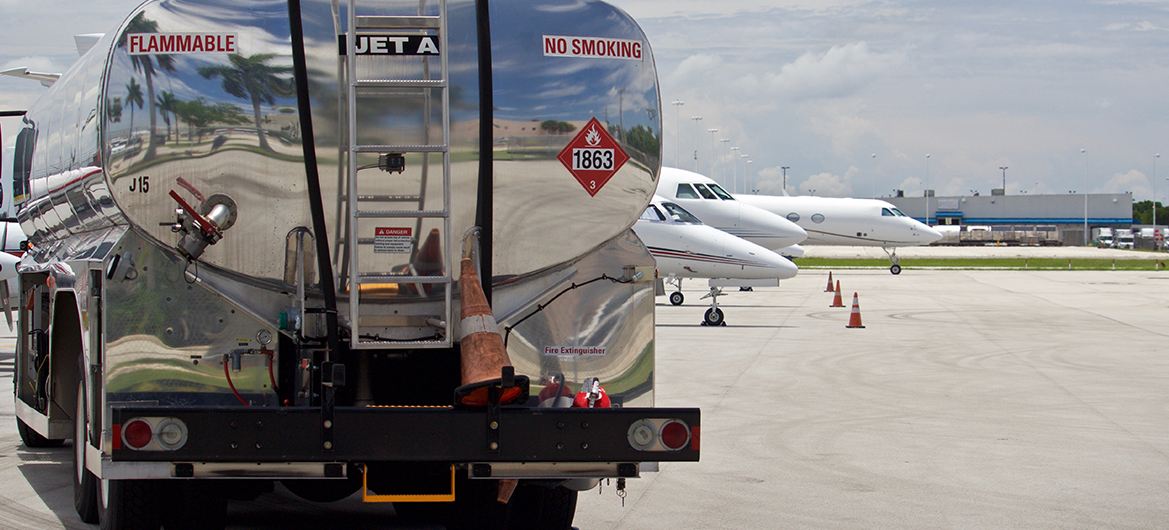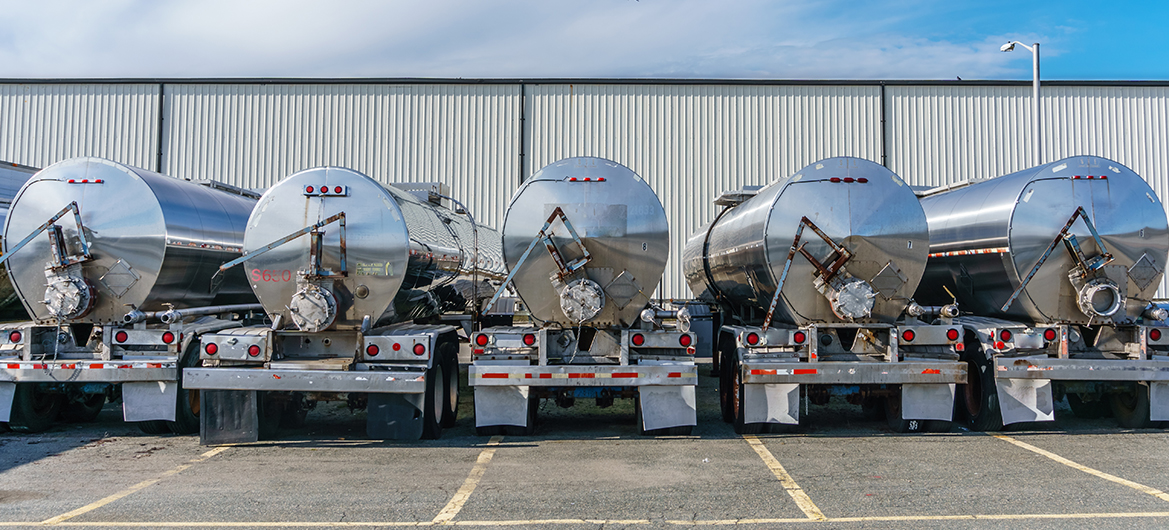

FAQs About Hazmat Loads
09.14.2022
10 FAQs Every Truck Driver Should Know About Hazmat Loads
As a truck driver, you will carry many different loads, but one of the most challenging is the hazmat load. Transporting potentially dangerous materials requires skill, care, and thorough knowledge of best practices and regulations. Want to learn more about this type of load? Here are 10 of the most important FAQs you should know before hauling this type of cargo.
What is a hazmat load?
A hazmat load is any cargo that contains goods capable of harming people, animals, or the environment. These goods may be flammable, explosive, poisonous, radioactive, corrosive, or damaging in some other way. The Secretary of the Department of Transportation is responsible for regulating these goods, and the shipper is responsible for identifying and classifying a shipment as hazardous.
Due to their dangerous nature, these shipments naturally pose a higher risk, both to you as the truck driver, and others nearby, particularly if you experience an accident while on the road. As a result, these shipments are required to comply with specific rules and regulations to ensure their safe transport, and to ensure the safety of those who are around the load before, during, and after its transport.
What are some examples of materials that can be considered hazmat?

Many materials may be considered hazmat. Common household items that you may not consider hazardous, but which pose a threat due to their flammability, poisonous nature, or explosive tendencies, may qualify as hazmat loads. Examples include gun ammunition, nail polish, hair care products, and deodorants.
In addition, hazmat loads may consist of less common items that are more obviously dangerous. Examples include many types of gasses, fuel, explosives, and radioactive materials. In general, a substance may be classified as hazardous if it fits any of the following categories:
- Explosives
- Non-Flammable Gasses
- Flammable Liquids and Solids
- Materials That Are Dangerous When Wet
- Oxidizers/Organic Peroxides
- Inhalation Hazards
- Radioactive Materials
- Corrosive Materials
- Miscellaneous Hazards
What is the first thing that should be done before attempting to haul a hazmat load?
Many regulations are governing the hauling of hazmat loads that you will need to be aware of and in compliance with. However, the first step in successfully transporting this type of cargo is to make sure you have all of your certificates and paperwork in order. Here is a list of some documents you will need to have in your possession before moving hazardous materials:
- Hazmat certificate on your CDL
- Hazmat certificate for your carrier
- Copy of the hazmat book
- At least 4 placards per hazmat material for any load over 1,001 pounds
- A completed bill of lading
- Copy of the hazmat table
- Shipping papers
Keep the appropriate paperwork within easy reach, preferably inside your driver’s side door.
What are some of the things that I need to do to prepare for hauling a hazmat load?
Hauling a hazmat load will require some preparation to ensure the safety and compliance of your load. Here are some of the basic steps you should take to ready your truck and yourself for the transportation of this type of cargo. Make sure that:
- The materials ID number and the ID number on the shipping papers match.
- Paperwork has an emergency contact number on every page.
- The shipping papers include the materials name, hazard class, and quantity that you are shipping.
- That the cargo is properly marked and in line with the shipping papers.
- Your trailer placards match the shipping papers.
- You understand the emergency response information requirements and the paperwork you carry, and make sure that you can answer any questions about your load.
- Ensure your truck includes a C-class fire extinguisher in the cabin.
What are some of the things that I need to do while I am hauling a hazmat load?
Once you are on the road with your hazmat load, you will have to remain alert and compliant with all relevant rules and regulations. Here are some of the things you will have to do to haul your load successfully.
- Present your hazmat paperwork first at all weigh stations and stopping points.
- Follow designated hazmat routes.
- Stay alert at all times, especially to the way your load shifts and moves as you drive.
- Adjust your speed down to accommodate road and weather conditions.
- Avoid speeding
- Avoid distractions such as eating or using your cell phone while driving.
- Stay alert to potential hazards on the road (e.g., soft shoulders, areas of low visibility)
- Get enough rest and avoid fatigue.
- Follow your hours of service regulations.
- Avoid drugs and alcohol, including over-the-counter drugs.
What are some of the things that I need to do after I have delivered a hazmat load?
Successful delivery of a hazmat load is an accomplishment! Once you deliver your cargo, you should follow some basic steps to prepare yourself for the next trip. Follow these steps after arriving with your hazmat load:
- Ensure the appropriate unloading of your materials.
- Make sure the unloading process is inspected at least once an hour.
- Once the cargo is unloaded, remove your hazmat placards from the vehicle.
- Deliver or secure all relevant paperwork.
What are some of the things that I need to do if I am involved in an accident while hauling a hazmat load?
An accident while hauling a hazmat load is an emergency that you must handle immediately and cautiously. Here are the first steps you should take when you are involved in an accident, whether the accident is your fault:
- Check to see if anyone involved in the accident is injured or requires medical attention.
- Pull out your shipping papers and applicable documents.
- Call the emergency phone number on the bill of lading.
- Keep people away from the scene of the accident.
- Alert emergency personnel to the dangers of the hazardous material.
- Get help.
- Follow your employer’s and emergency responders’ instructions.
What are some of the things that I need to do if I am stopped by the police while hauling a hazmat load?
If you are stopped by the police while hauling a hazmat load, you should be prepared with all the information pertaining to your load. This includes your hazmat certification, shipping papers, and other information about the contents of your load. You should be able to present this paperwork to the police and answer any questions you are asked regarding your cargo.
What are some of the things that I need to do if I am involved in an accident while hauling a hazmat load, and I am not at fault?
In addition to the above steps, if you are not in fault in an accident while hauling a hazmat load, there are certain steps you should follow. Try these to make it easier to navigate the insurance process afterward:
- Document any evidence relevant to the crash, as long as it is safe. This may include taking photos, and notes about the road and weather conditions.
- Write down contact information for any witnesses on the scene.
- Collect the other driver’s name, contact information, and insurance information.
- Get the other driver’s license information.
What are some of the things that I need to do if I am involved in an accident while hauling a hazmat load, and I am at fault?
Occasionally, despite your best efforts, you may be at fault in an accident involving a hazmat load that you are carrying. In addition to the steps listed above for managing the accident and getting help, you should consider taking these steps to protect yourself:
- Do NOT admit fault in the accident.
- Wait, to discuss the details of the accident with your lawyer.
- Do NOT lie.
- Cooperate with the police, without admitting fault.
- Remember your right not to talk to any insurance company (including your own).
- Do not discuss the accident on any social media platform.
- Call a truck accident lawyer.
Hauling hazmat loads requires skill, attention, and careful compliance with regulations. If you are assigned one of these loads, take the time to familiarize yourself with the load, the process of hauling it, and all applicable rules and regulations. With careful preparation, hauling, and unloading, you can successfully deliver any dangerous material to its proper location. Need insurance to protect you while hauling these loads? Contact RoadMasters Insurance today for a competitive, effortless, and fast quote!




